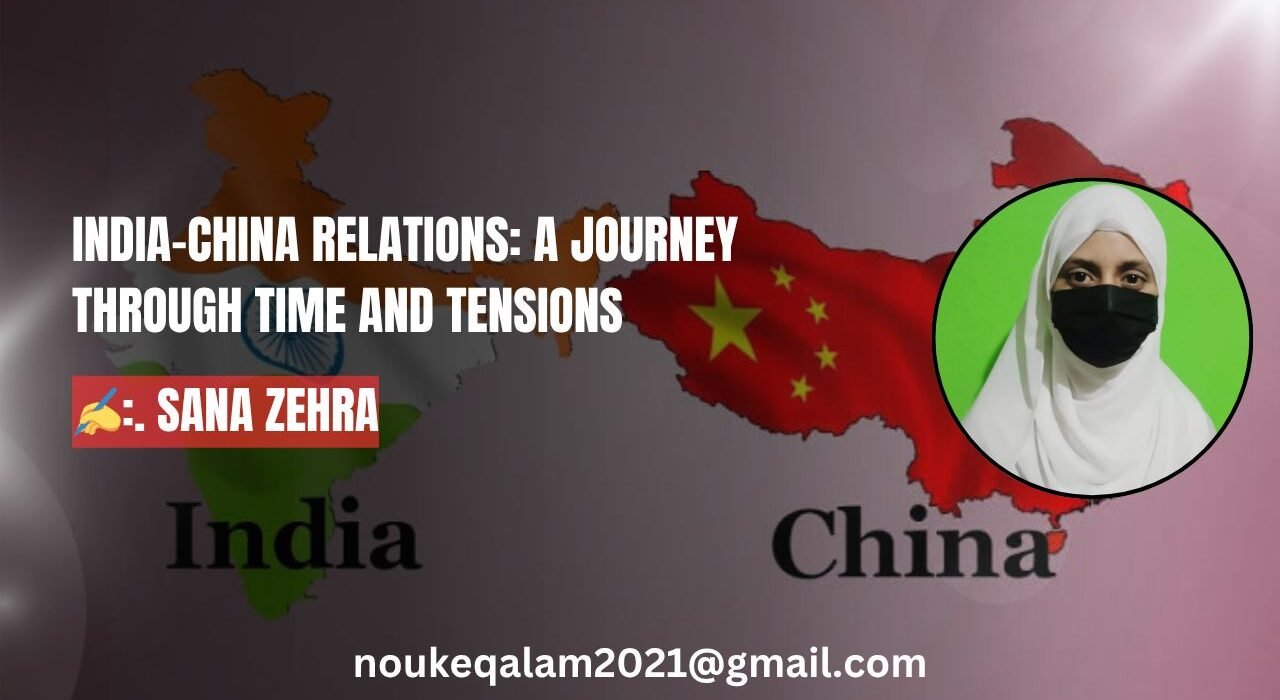Class 12th, Political Science
Govt Higher Secondary School, Delina Baramulla
Introduction
India-China relations are complex and characterized by a blend of strategic competition, economic cooperation, and border tensions, along with frequent diplomatic engagements.
Historical Ties and Early Cordiality
The ancient Silk Route highlights the close historical ties between India and China. Buddhism spread from India to China, symbolizing deep cultural exchange. Chinese leader Chiang Kai-shek supported India’s freedom struggle. In 1949, India was among the first countries to recognize the People’s Republic of China.
In 1954, both countries signed the Panchsheel Agreement, which was based on five principles: mutual equality, non-interference, non-aggression, mutual respect, and peaceful coexistence. This was the era of Hindi-Chini Bhai-Bhai (India-China Brotherhood).
Era of Conflict and Tensions
Tensions rose in 2017 when China began constructing a road in the disputed Doklam area, which is claimed by Bhutan. Indian troops intervened, leading to a tense standoff.
In 2020, a violent confrontation occurred in the Galwan Valley (Ladakh region), resulting in hand-to-hand combat and casualties on both sides, further escalating the conflict.
Efforts Toward Normalization
In 1988, Indian Prime Minister Rajiv Gandhi visited China, and both nations agreed to establish a Joint Working Group to address border disputes. In 1996, Chinese President Jiang Zemin visited India and signed a document on military confidence-building measures.
In 2000, BRICS was formed by Brazil, Russia, India, China, and South Africa to address global economic challenges. Its annual summits have allowed India and China to engage in meaningful dialogue.
Notable diplomatic visits and agreements include:
2002: Chinese Premier Zhu Rongji’s visit to India, enhancing economic ties.
2003: Indian PM Atal Bihari Vajpayee visited China and recognized Tibet as a part of China.
2014: Chinese President Xi Jinping visited India and signed several bilateral agreements.
2015: PM Narendra Modi signed 24 agreements with China.
2019: Informal summit between Xi Jinping and Modi in Chennai to improve mutual understanding.
2024: Modi and Xi met during the 16th BRICS Summit in Kazan, Russia.
Suggestions for Improving Bilateral Relations
Given that India and China are two of the most populous and rapidly growing economies in the world, sharing a 4,000 km-long border, cooperation is essential for regional and global stability.
Here are a few suggestions to manage and strengthen bilateral ties:
- Frequent diplomatic dialogues to resolve outstanding issues, especially border disputes.
- Strengthening trade and economic relations.
- Promoting cultural, educational, and tourism exchanges through people-to-people contact.
- Encouraging neutral mediation platforms such as BRICS to act as diplomatic bridges.
Acknowledgment
I am sincerely thankful to Lecturer Qazi Syed Sajad Sir for his valuable help and guidance in writing this article.





